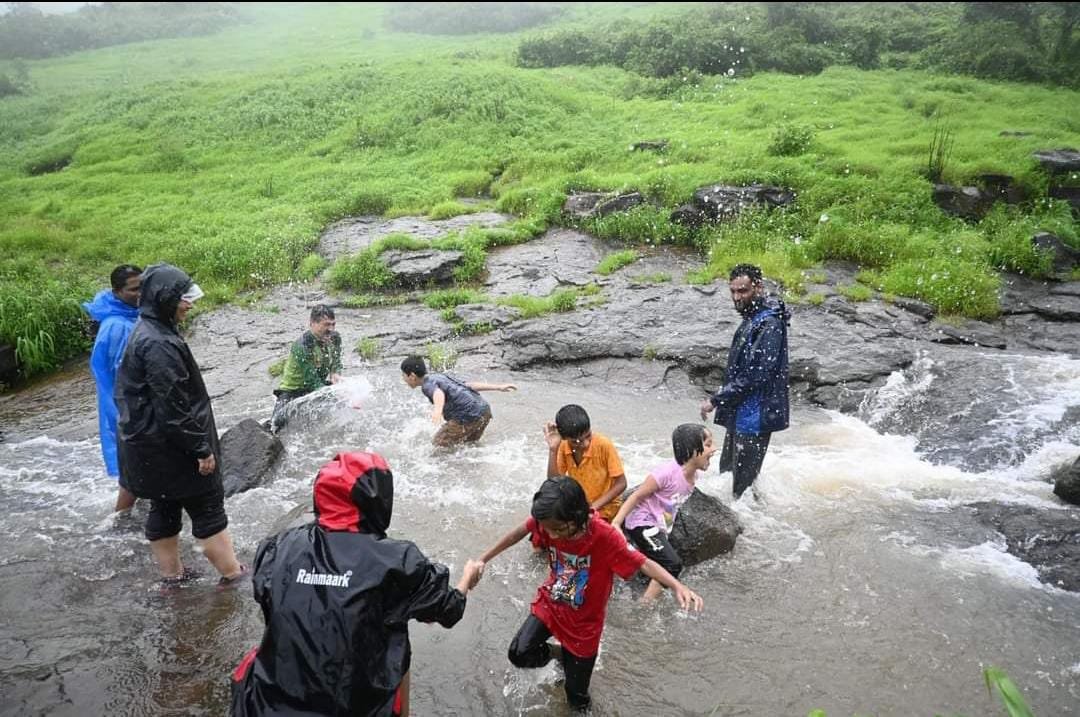Conquer the Sahyadris Safely: Your Beginner's Guide to Adventure in the Western Ghats (Maharashtra)
The Western Ghats are a treasure trove of natural beauty and adventure, offering countless opportunities for rejuvenation and exploration. By embracing a mindset of preparedness, understanding the inherent risks, and most importantly, making an informed choice about your adventure partners, you can ensure your journeys into the Sahyadris are truly enriching and safe.
Remember, the goal is not just to conquer a peak, but to return safely, enriched by the experience, and ready for your next adventure. Choose wisely, trek responsibly, and let the magnificent Western Ghats unveil their wonders to you.
Conquer the Sahyadris Safely: Your Beginner's Guide to Adventure in the Western Ghats (Maharashtra)
The Western Ghats, or Sahyadris as they are affectionately known in Maharashtra, are a breathtaking tapestry of lush forests, towering peaks, ancient forts, and cascading waterfalls. For anyone with a spirit of adventure, these mountains call out with an irresistible allure. From the misty trails of Lonavala to the challenging ascents near Nashik, the opportunities for trekking, hiking, and exploring are endless. But as enchanting as they are, the Sahyadris, like any wild natural environment, demand respect and preparedness, especially from beginners.
This guide is designed to equip you with the essential knowledge and safety tips to ensure your first forays into the magnificent Western Ghats are not only exhilarating but also safe and memorable. We'll focus on crucial aspects, from personal readiness to, most importantly, how to choose the right adventure partner for your journey.
Why This Post Matters: Navigating the Thrill with Prudence
In an age where adventure tourism is booming, and stunning visuals flood social media, it's easy to get swept up in the excitement. However, the raw beauty of the Western Ghats often conceals inherent risks. Unpredictable weather, challenging terrain, remote locations, and the sheer physicality required can quickly turn an exciting outing into a precarious situation if not handled with care.
Many beginners, driven by enthusiasm, might overlook critical safety measures or join groups without adequate vetting. This can lead to various problems, ranging from minor discomforts and injuries to, in unfortunate cases, serious accidents. This post is vital because it addresses a fundamental need: empowering novice adventurers to make informed decisions, prioritize their safety, and choose reliable companions for their exploration of Maharashtra's natural wonders. Your safety isn't just about what you carry in your backpack; it's profoundly about who you trust to lead you.
Essential Safety Tips for Beginners in the Western Ghats
Before you even think about lacing up your boots, let's cover the foundational safety tips that every beginner must internalize:
1. Physical Preparation is Paramount: You don't need to be an Olympic athlete, but a reasonable level of fitness is crucial.
- Start Small: Begin with shorter, easier hikes before attempting longer or more strenuous treks.
- Regular Exercise: Incorporate cardio (running, cycling, swimming) and strength training into your routine. Focus on leg strength and core stability.
- Listen to Your Body: Don't push yourself beyond your limits. Fatigue increases the risk of injury.
2. Gear Up Right, Not Just Fashionably: Your equipment is your first line of defense against the elements and terrain.
- Footwear: Invest in proper trekking shoes with good ankle support and grip. Avoid sneakers or casual shoes.
- Clothing: Dress in layers. Opt for moisture-wicking fabrics. Even on sunny days, carry a lightweight waterproof jacket. The weather in the Ghats can change rapidly.
- Backpack: A comfortable backpack that fits well is essential. Pack only what's necessary to avoid unnecessary strain.
- Hydration: Carry plenty of water. Dehydration is a serious risk. Consider electrolytes for longer treks.
- First Aid Kit: A basic personal first aid kit is non-negotiable. Include bandages, antiseptic wipes, pain relievers, and any personal medications.
- Navigation Tools: While you'll be with a group, knowing how to use a compass, map, or a reliable GPS app on your phone (with downloaded offline maps) is a valuable skill.
- Headlamp/Flashlight: Even if you plan to return before dark, an emergency light source is crucial.
3. Understand the Terrain and Weather: Maharashtra's Western Ghats offer diverse landscapes, each with its challenges.
- Monsoon Treks: While incredibly beautiful, monsoon treks are notoriously slippery and risky due to reduced visibility, leeches, and swollen streams. Beginners should be extremely cautious and only undertake monsoon treks with highly experienced groups.
- Summer Heat: The heat can be intense. Start early, stay hydrated, and plan for breaks in shaded areas.
- Rocky Patches: Many trails involve scrambling over rocks. Good grip and careful footing are essential.
4. Communicate and Inform:
- Tell Someone Your Plans: Always inform family or a friend about your trekking plans, including your route, expected return time, and who you're going with.
- Stay with Your Group: Never wander off alone. The "buddy system" is critical in the wilderness.
- Communicate Discomfort: If you're feeling unwell, tired, or injured, immediately inform your trek leader or fellow participants.
The Most Crucial Step: Choosing Your Adventure Partner Wisely
This is where many beginners fall short. Joining any random group advertised online can be a recipe for disaster. Your safety, experience, and the success of your adventure largely hinge on the authenticity, experience, expertise, and track record of the group or company you choose.
1. Authenticity: Are They Legitimate?
- Registered Business: Do they operate as a legally registered entity? Look for their official business registration details, GSTIN, etc. A legitimate company will have these readily available.
- Professional Website: A well-maintained, professional website with clear contact information, terms & conditions, and privacy policies indicates a serious operation.
- Physical Presence: While not mandatory, a physical office or a known contact point can add to their credibility.
- Transparent Communication: Are their communication channels clear and responsive? Do they provide all necessary information upfront?
2. Experience: How Long Have They Been Around?
- Years in Operation: Longevity in the adventure tourism business often signals reliability and a deep understanding of the terrain. Companies that have survived and thrived for years have likely honed their safety protocols and logistical planning.
- Number of Treks/Events Conducted: Ask about the volume of activities they conduct. A company that organizes events frequently is likely more adept at handling various situations.
- Local Knowledge: Do their leaders possess extensive local knowledge of the Western Ghats, including specific trails, weather patterns, local communities, and emergency access points?
3. Expertise: Who Are Your Leaders?
- Certified Leaders: Are their trek leaders certified in wilderness first aid (e.g., WFR, NOLS WFA) or basic first aid? Do they have mountaineering or trekking certifications? This is non-negotiable.
- Experience of Leaders: Enquire about the individual experience of the trek leaders who will be accompanying your group. How many times have they done that particular trek? Are they trained in emergency response, navigation, and group management?
- Participant-to-Leader Ratio: A good ratio ensures adequate supervision and assistance for all participants. Avoid groups with a very high participant count and too few leaders.
- Knowledge of Flora & Fauna: While not directly safety-related, leaders who can share insights about the local ecosystem enrich your experience and indicate a deeper connection to nature.
4. Track Record: What Do Others Say?
- Online Reviews: Check independent review platforms (Google Reviews, TripAdvisor, Facebook reviews). Look for consistent positive feedback regarding safety, organization, and leader professionalism. Be wary of companies with only a few, overly enthusiastic, or suspiciously similar reviews.
- Testimonials: While testimonials on a company's website are good, look for authentic ones, perhaps with names or photos, and cross-reference them if possible.
- Social Media Presence: A consistent and active social media presence can offer insights into their past activities and participant engagement. Look for posts that show responsible trekking practices.
- Referrals: Word-of-mouth is powerful. Ask friends, family, or local trekking communities for recommendations.
- Emergency Protocols: Inquire about their emergency plan. Do they have a clear protocol for medical emergencies, evacuations, or getting lost? Do they carry emergency contact numbers, satellite phones (for remote areas), or walkie-talkies?
5. What to Ask Before Booking: Don't hesitate to ask these questions:
- What is the experience level of the trek leader for this particular trip?
- What is your emergency protocol?
- What first aid equipment do you carry?
- What is the maximum group size, and what is the leader-to-participant ratio?
- What is your cancellation/refund policy?
- What is included and excluded in the package? (Meals, transport, permits, etc.)
- Are there any specific physical requirements for this trek?

